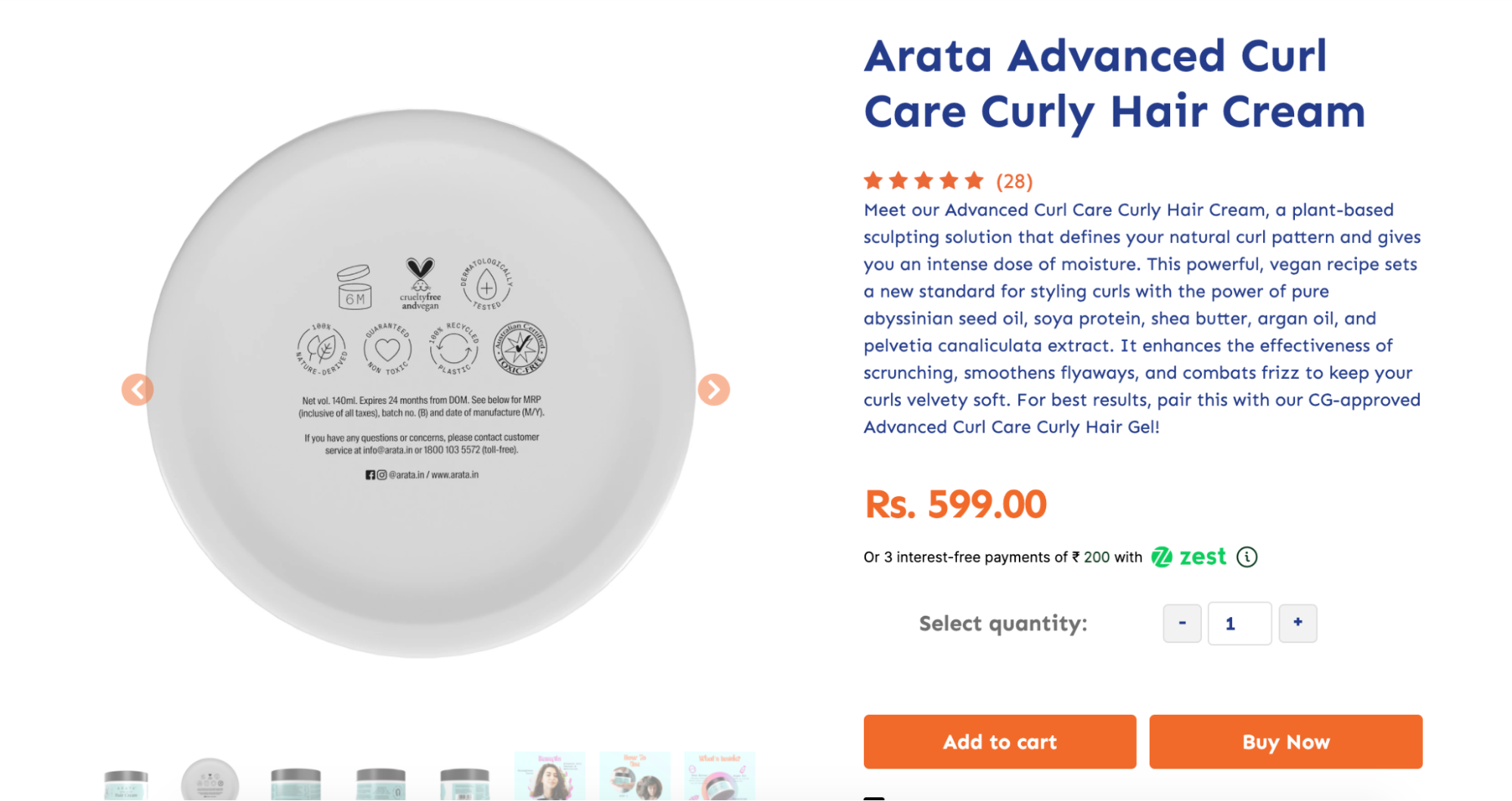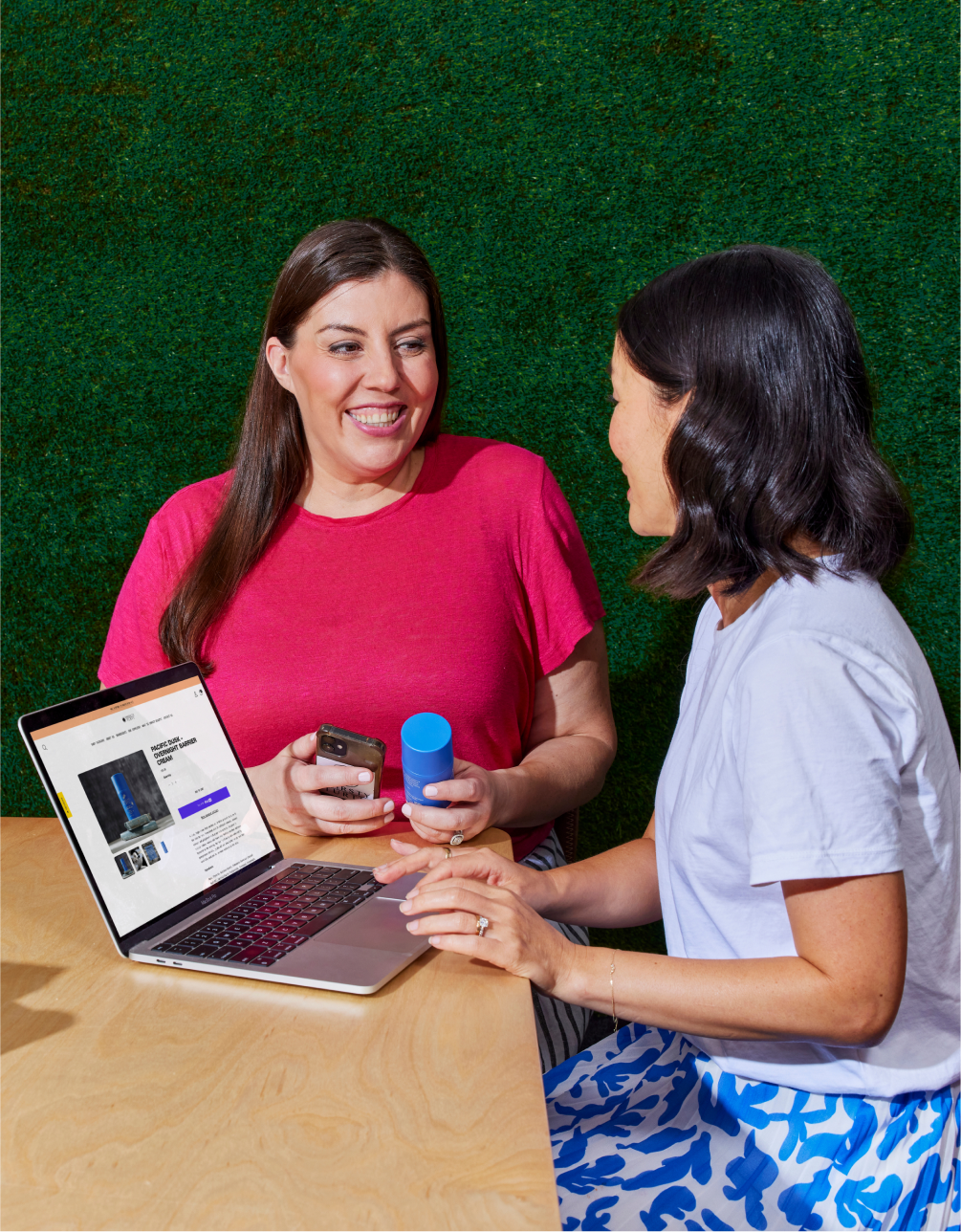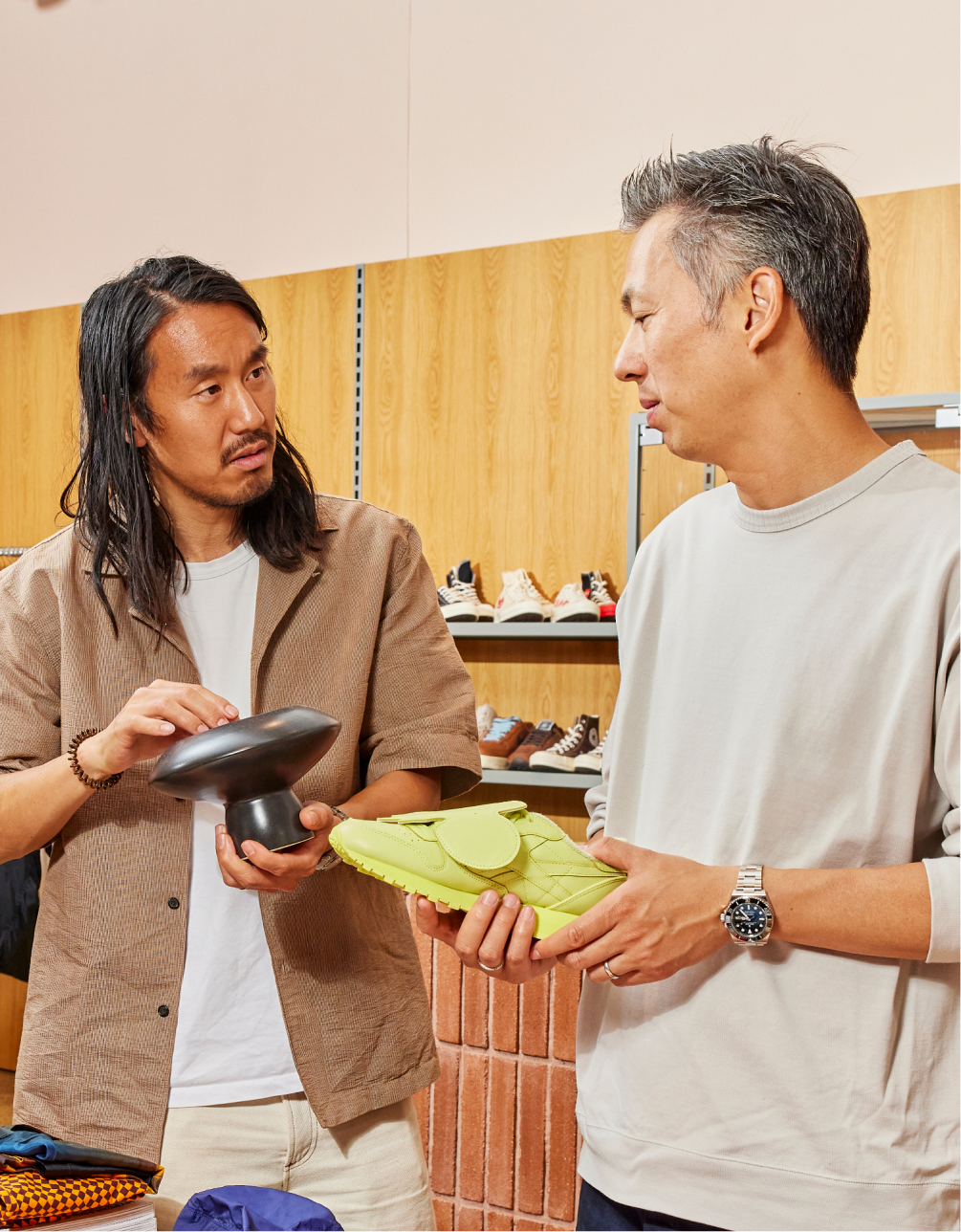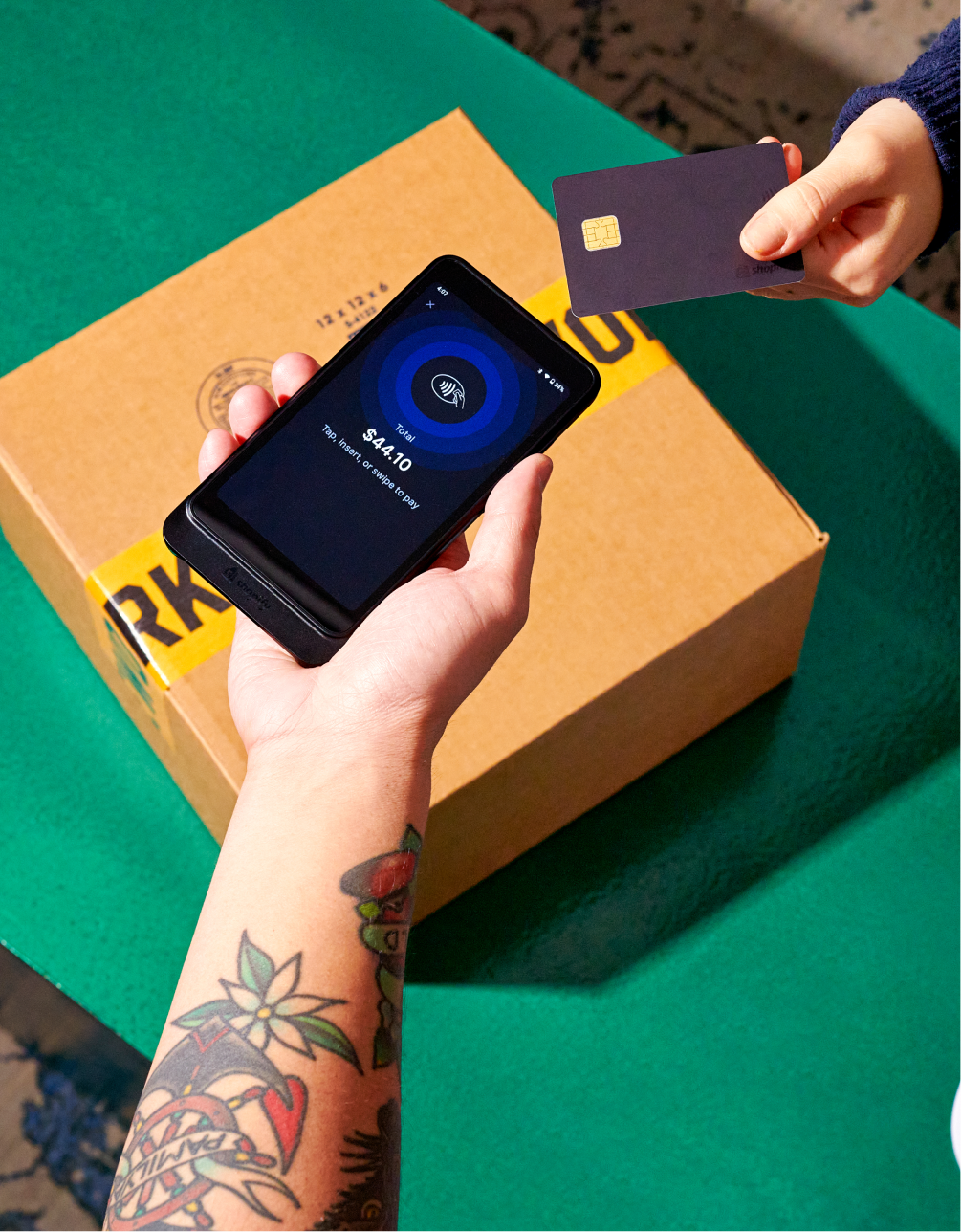The chances of you getting a customer to make a purchase from your brand when they walk into your physical store vs your online store, are much higher.
The reason?
You’re able to understand their needs better, talk to them and recommend products as they browse through your collections. The sales person in your store is key to this interaction and they make sure they’ve done their best to ‘sell’ before this customer walks out.
Now what if we said you could actually turn your ecommerce website into a sales person for your store?
How to optimize your ecommerce website to increase conversions (and sales)
There is no one said approach for all ecommerce businesses to follow. But there are some best practices that keep the consumer in mind and tap into their purchase psychology to help you turn visitors into subscribers and customers.
Let’s take a look at some of them:
- Optimize your store speed
- Apply persuasive design and content to your website
- Simplify product search and store navigation
- Display product recommendations
- Offer shopping assistance
- Add purchase triggers
- Simplify your checkout process
- Offer multiple payment and delivery options
- Frequently asked questions
1. Optimize your store speed
Imagine walking into a physical store but not being able to see their collection unless you walk a whole 2 km long corridor. Chances are you’re just going to exit and move to another store where you get to ‘shop’ instantly.
The same holds true on your website.
Your page speed has a huge impact on your store visitor behavior. Studies have found that a website’s conversion rate drops by an average of 4.42% with each additional second of load time (between 0-5 seconds).
That’s why the first thing you need to do is check your store speed. You can find details on your online store speed in Shopify Analytics or you can make use of the PageSpeed Insights tool by Google to see how your site fairs.
Here are some tips to keep your store speed optimized:
- Choose a lightweight Shopify theme
- Optimize all your store media (product videos, images, 3D models, etc)
- Use lazy load for your online store media
- Add apps and plugins you absolutely need (and remove redundant ones)
Additional reads:
- How to improve your online store speed (factors you can control)
- Improve your ecommerce and speed to 2x conversions
- 8 tried and tested ways to perform Shopify speed optimization
2. Apply persuasive design and content on your website
The number one superpower of a salesperson in a store is their ability to persuade you - nudge you to explore another product range, check out a complimenting product or see ‘how good it looks on you’.
You can bring the same level of persuasion to your store in two ways - design and content.
Persuasive design
Your website needs to be designed in a manner that keeps visitors on the page, and moving forward with their transaction. It needs to replicate the shopping journey of someone who chooses to buy from your offline store.
This includes making your store:
-
Visually appealing - The new-age consumers want to be able to see the products as closely as possible. This requires you to keep focus on using high quality images, product videos, 3D models and other visual elements.
For example, Amrutam, an ayurveda brand, uses high quality visuals across their website - from the home page to their product pages, their visuals also have a consistent look and feel.

-
Visually persuasive - This part is less about the quality of the visuals you make use of, and more about what you show and how you show them. The goal is to bring the visitor’s attention to your key selling points.
Continuing on Amrutam’s example, if you notice, all their product visuals have an element of the natural herbs shown to reinforce the ingredients they use. But in addition to that, their product pages use visual cues to highlight the product benefits and ingredients, bringing them to the visitor’s attention almost instantly.

Additional resources:
- 5 psychological design tactics that make braind tick and visitors click
- How to improve your ecommerce store’s user experience
- Signs your Shopify store needs a redesign
- 11 drool-worth product page examples to inspire yours
Persuasive copy/ content
Visuals can be understood differently; you need to make sure visitors take away the right information from your design. This is where your copy/ content comes into play.
Your website copy needs to keep the consumer’s interest in mind. This includes keeping your sales pitch at the bare minimum, and focusing on sharing a story that helps them understand how the products address their needs.
Take a look at the copy from the above product page; it makes the product sound easy to use on a day-to-day basis instead of the regime sounding all too complicated. The simplicity of the product usage is exactly what gets it sold!

Additional resources:
- 9 ways to write product descriptions that inform and persuade your customers
- How to share all product details without being too wordy
- The best way to convince customers to buy an expensive product
3. Simplify product search and store navigation
Once you have the store design and copy in place, the very next thing you need to do to optimize your website is simplify the shopping experience.
You need to make it simple for store visitors to not just find products that they’re looking for, but also explore everything else that you sell on the site. This essentially boils down to taking care of two aspects: store search and navigation.
Store search
Statistics have found that more than 30% of visitors use a site search functionality when available. But a basic store search functionality isn’t enough when consumer purchase behavior and journeys differ.
Here are some tips:
- Enable auto-complete
- Provide search suggestions
- Ensure typo-tolerance and auto-correction
- Implement synonym search
- Enable product filters for search results
- Show related searches
- Offer visual discovery
You can actually optimize the search functionality on your store with the help of Shopify apps. They come packed with features that cater to all search behavior. Explore them here.
Navigation
Not every store visitor will use search and filters to find products they’re looking for. Sometimes they might visit your store with nothing specific in mind, just wanting to explore what you have to offer.
This is where your store’s navigation comes into play - similar to how you lay out and display products in a physical store.
Here are some tips to follow:
- Categorize your products clearly
- Keep the number of categories optimized
- Include visual cues for each category
- Enable product filters for every category
- Pay attention to the look and feel of your menu
- Display your popular, trending or new collection of products on the home page
Additional resources:
- 11 navigation changes to improve your store’s user experience
- 8 innovative ways to optimize your website navigation
- Great examples of ecommerce navigation
4. Display product recommendations
Think about the time you enter a physical store, seeking a pair of sports shoes. You let the salesperson guide you through the collection available, helping you explore the different features and benefits each pair of shoes has to offer.
That’s called giving product recommendations, and you can do the same on your online store.
By adding product recommendations across your store, you can keep visitors engaged by showing them more of what they like or what consumers similar to them are buying.
For example, you visit a store looking for nourishing hair cream. With the help of product recommendations, you can display what other customers are buying alongside the hair cream for a proper regime.


If you see the example above, you will notice how the store isn’t just displaying similar products, but selling them as a bundle. Almost like how you end up buying a pair of socks alongside the sports shoes you intended to purchase.
Product recommendations, when used smartly, can help you:
- Get visitors to explore more products: You can display similar or related products to ensure if the item being viewed does not meet their needs, they can explore others.
- Upsell products: If someone is viewing a specific product with a better variant available, you can display it through recommendations.
- Cross-sell products: If a visitor is searching for something specific, you can use recommendations to display items that are complimentary or compatible with what they’re interested in.
- Promote new arrivals: You can also use product recommendations to bring your new products into the limelight; items that people may not otherwise know are available.
- Promote trending/ hot-selling products: With the help of product recommendations, you can also show what ‘many’ other people are buying from you or what’s trending on your store; it’s a great way to convince a consumer to make purchases based on proven demand.
Product recommendations don’t just help keep a visitor engaged and increase conversions, but also increase your average order value.
If you’re looking at using product recommendations to increase website conversions, here are some resources to help you:
- How to add a recommended products section on your store
- How to build a customizable related products section
- Types of product recommendations to increase your sales
- Explore Shopify apps to display product recommendations
5. Offer shopping assistance
Surveys have found that consumers want to talk to brands before making a purchase from them. The lack of touch and feel of products is making consumers more anxious while making purchases online, and that’s why you need to offer shopping assistance on your online store.
The simplest way to do this is to implement a live chat on your online store and automate FAQs.
Make it simple for store visitors to reach out to your business, drop in their queries and get answers that help them make an informed purchase decision.

Want to make it simpler to offer shopping assistance? Explore Shopify Inbox today.
Additional reads:
- Ecommerce chatbots: How to offer shopping assistance to buyers across different channels
- Explore all live chat apps for Shopify
6. Add purchase triggers
A salesperson job is to also ensure that you continually feel the need to make a purchase before leaving the store. So they use all tactics to nudge you towards the point of sale - telling you how the product is selling out fast, how the deal is available only for a few hours or how the product in hand is the last in the size you’re looking for!
What if we said you could bring in all those purchase triggers to your online store too?
Here’s how you can add purchase triggers to your store without constantly screaming ‘buy now’ and playing on consumer psychology:
Display a countdown timer
About 60% of people make a purchase within 24 hours because of FOMO. Adding a countdown timer on the pages you’re promoting a sale or a discount on, is a great way to instill FOMO and get a visitor to take action on it.
Here’s an example of the same:

Show live sales notification
Studies have also shown that 48% of consumers spend on purchases they didn’t have to, to keep up with their friends. Now an in-store salesperson would verbally tell you about a product’s popularity or you can see it too. But on an online store, you need to create the same environment with the help of live sales notifications - these are small alerts that continually display a message to a visitor when the product they’re viewing is being purchased.
Here’s an example of the same:

To use this conversion rate optimization strategy, here are some resources you can use:
- The psychology of ecommerce FOMO
- FOMO marketing: Winning strategies to boost sales
- Explore all Shopify apps to display a countdown timer
- Explore all Shopify apps to display live sales notifications
7. Provide social proof
More than 57% of consumers will only make a purchase when it has a proven record of fulfilling demand, quality or delivering a great customer experience. Another study found that 93% of customers read online reviews before making a purchase.
In an offline store, you can see customers trying products and liking them enough to make a purchase. In fact, there’s a salesperson around to also tell you all about the experience the product has to deliver and how customers feel about it.
To use the same conversion ractic on your online store, you need to display social proof. If you let a visitor walk away to the search engine to look for product reviews, they’re more likely to never come back to yours.
Tackle their need for validation and confirmation, by displaying social proof like the following on your store:
- Product Ratings - An average score given to a product, out of 5, based on how consumers feel about it.

- Customer Testimonials/ Reviews - A textual explanation of the customer’s experience with a product they bought from you.

- User generated content - This is a form of social proof wherein you display a product in use by the customers who bought it. You can do this by featuring customers on your store or embedding your social media feed.


8. Simplify your checkout process
In-store shopping is great because you get to pick products you like and move to billing, completing the purchase almost instantly.
You need to ensure there’s a similar experience offered on your online store as well.
Studies have found that 1 in 5 online shoppers would abandon a purchase if the checkout process is too long or complicated.
This includes looking into the overall time it takes for a visitor to complete a purchase after adding a product to the cart, the number of fields they need to fill, the total number of steps they need to complete or even offering the ability to checkout as a guest.
Here are some resources to help you optimize checkout for more conversions:
- 25 ecommerce checkout best practices that convert
- 40 checkout page strategies to improve conversion rates
9. Offer multiple payment and delivery options
Offline stores see more conversions from walk-ins because they can deliver instant gratification. A consumer gets to walk in and walk out with their purchase at that very moment, completing the purchase through their preferred payment method - cash, card or even popular wallets like Google Pay.
You can actually offer the same experience on your online store as well.
Here are some tips to follow:
- Offer multiple payment methods based on who your target audience is
- Include multiple delivery options that get the purchase to the consumer faster
- Display all payment and delivery options clearly on the website
Additional resources:
- Different payment methods on Shopify and how to set them up
- The importance of offering cash on delivery in India
- Explore all shipping partners in India
Stop losing customers from your online store!
Be it online or offline, consumers have similar expectations from the brands they choose to buy from.
The above tactics are meant to replicate the shopping experience consumers get in a physical store by implementing certain conversion strategies.
Each of the tactics above are meant to help an online shopper not just make a purchase easily, but make an informed purchase that leads to an overall better customer experience from your business.
Ready to turn your online store into a salesperson for your brand?
Get started on Shopify with a free trial and explore these Shopify apps that help you convert better.













